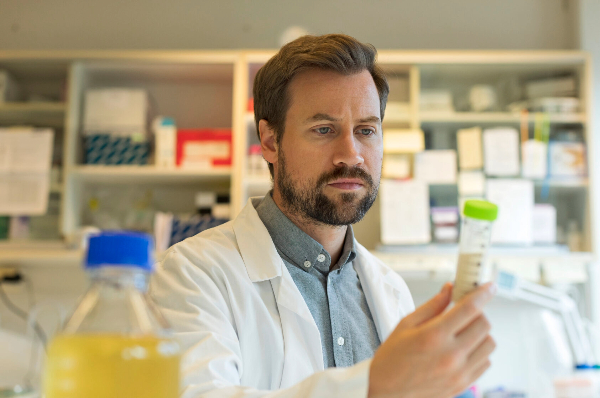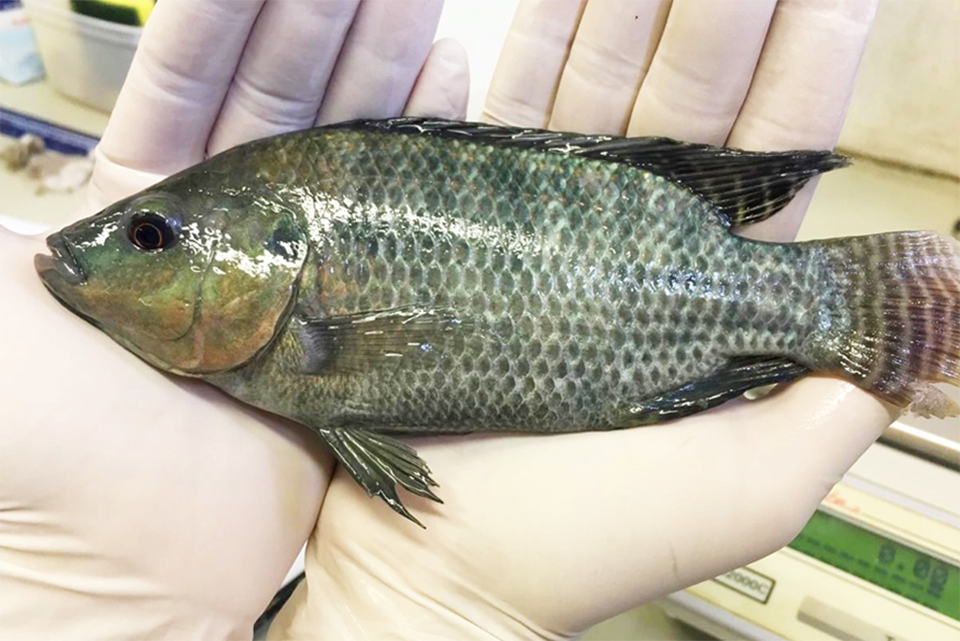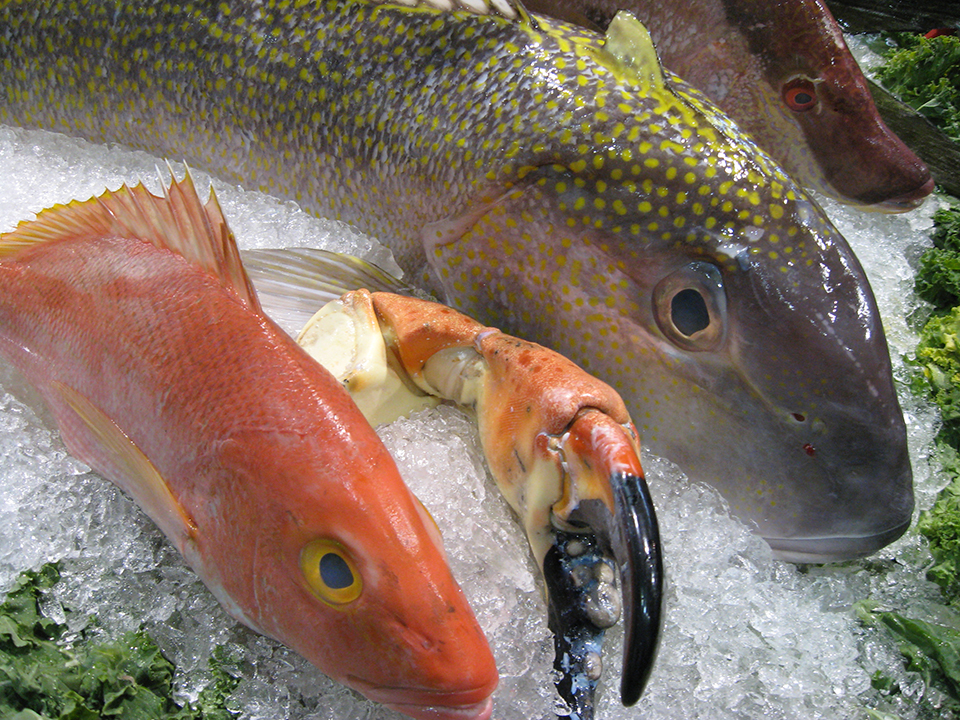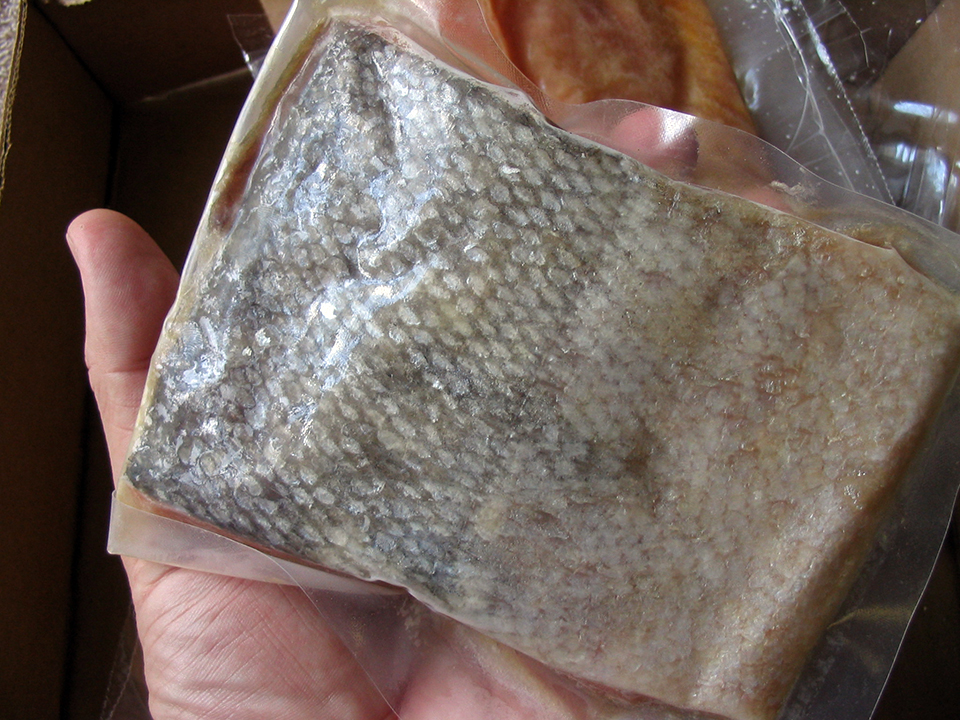A chemical that causes fish protein powder to smell fishy can be removed, opening door for use in protein shakes and meal replacements

Biotechnologists at the Norwegian Research Centre (NORCE) have improved a protein powder made from fish byproducts by tailoring enzymes. The project continued to explore using enzymes to eliminate the fishy odor from fishery byproduct-derived protein powders, enhancing their appeal to human consumers.
Enzymes are catalysts that increase the rate of a chemical reaction, without being consumed themselves. They can be incredibly precise and selective in which reactions they catalyze. However, many enzymes are quite sensitive to temperature and lose their activity at temperatures of 40 degrees-C (104 degrees-F) or higher.
In the project preceding this study, aMASE, researchers found an enzyme that could remove a molecule that causes fish smell. Taking their research one step further, they recently published an article in Applied and Environmental Microbiology, which demonstrates an enzyme variant called mFMO_20 could be improved by making it more heat resistant.
“We started with an enzyme which is an efficient catalyst, but unable to tolerate high temperatures,” said Rasmus Ree, a researcher at NORCE. “Now, we have an enzyme that works better under processing conditions. We hope such an enzyme will be of interest to seafood producers who wish to exploit their byproducts even better, to increase their profitability.”
When fish are butchered, they are usually filleted, and while the fillet is sold, the rest of the fish carcass remains in the form of a head, frame and guts. These byproducts represent a large fraction of the total biomass. Much of this biomass is in the form of proteins with excellent nutritional value, which could have a higher economic value if they were more suitable for food.
“Our ambition is to design an enzyme process which seafood producers can use to make their business more profitable, and to keep as much of the biomass as possible food-grade,” said Ree. “The way these byproducts are handled now is that they are ground and treated with a special type of enzyme, called a protease. A protease cuts the fish proteins into smaller pieces. This process is called enzymatic hydrolysis, and what we are left with is a hydrolysate. After the hydrolysis is complete, the proteins are dried and you are left with a protein powder.”
This protein powder naturally tastes and smells like fish, and for that reason, it’s not typically used for human food.
“If we could make a protein powder with a neutral flavor, we could use it for things like protein shakes for athletes or meal replacements for the elderly or others who have trouble getting enough high-quality nutrition,” said Ree. “This is more economical and more environmentally sustainable than taking it out of the food chain for other purposes.”
The researchers searched for an enzyme that not only removed the fish smell but could also work in an industrial process that takes place at a relatively high temperature.
“We know that a compound called trimethylamine (TMA) causes a large part of the fish smell,” said Ree. “We have chosen to use an enzyme that converts TMA into trimethylamine-N-oxide (TMAO), as TMAO is smell-free. TMAO exists in fish naturally anyway. In fact, the TMA gets into the hydrolysate because after the fish is butchered, bacteria convert the naturally occurring TMAO into TMA.”
In 2020, researchers published a study showing that a natural enzyme called flavin-containing monooxygenase (mFMO), isolated from a methane-consuming bacterium, can be used to convert TMA into TMAO in a fish protein hydrolysate.
Circular economy: Hydrolysates of aquaculture byproducts as feed
“The hydrolysis process happens at a quite high temperature, 50-60 degrees, for hygiene reasons. mFMO is not stable at that high a temperature,” said Ree. “We made some changes in the mFMO enzyme, using an advanced algorithm which takes the shape and properties of the enzyme into account and suggests modifications we can do to make it more heat resistant.”
In collaboration with researchers at The Spanish National Research Council (CSIC), the NORCE scientists solved the structure of this enzyme variant. The molecular structure of an enzyme can tell a lot about its function, and in this case, they could see that the variant had some small but consequential changes in its surface, which could explain why it could handle the increased temperatures.
In the end, the researchers were able to show that we can use the improved enzyme in a hydrolysate made from salmon protein.
“When we increased the heat up to the process temperature, only the new enzyme variant could perform,” said Ree. “Not only that, but it worked better at a higher temperature than at a lower one. This told us that the new enzyme variant can handle industrial process conditions. Now we want to test it on other raw materials, such as cod and pelagic fish, while we continue optimizing the enzyme.”
Now that you've reached the end of the article ...
… please consider supporting GSA’s mission to advance responsible seafood practices through education, advocacy and third-party assurances. The Advocate aims to document the evolution of responsible seafood practices and share the expansive knowledge of our vast network of contributors.
By becoming a Global Seafood Alliance member, you’re ensuring that all of the pre-competitive work we do through member benefits, resources and events can continue. Individual membership costs just $50 a year.
Not a GSA member? Join us.
Author
-
Responsible Seafood Advocate
[103,114,111,46,100,111,111,102,97,101,115,108,97,98,111,108,103,64,114,111,116,105,100,101]
Tagged With
Related Posts

Aquafeeds
A look at protease enzymes in crustacean nutrition
Food digestion involves digestive enzymes to break down polymeric macromolecules and facilitate nutrient absorption. Enzyme supplementation in aquafeeds is a major alternative to improve feed quality and nutrient digestibility, gut health, compensate digestive enzymes when needed, and may also improve immune responses.

Aquafeeds
Effect of exogenous enzymes in plant-based diets on growth of Nile tilapia fingerlings
Exogenous enzymes phytase and a xylanase-β-glucanase mixture can, individually or combined, improve growth performance of juvenile Nile tilapia.

Intelligence
Enzymes in seafood, part 1
Enzymes are responsible for postharvest changes in seafood that impact product characteristics and reduce value. The odor of seafood is a direct result of enzyme activity.

Intelligence
Enzymes in seafood, part 2
The most important factors in the loss of quality in seafood are nucleotide catabolism and glycolysis. The rates and pathways of nucleotide degradation vary with species and muscle type.



